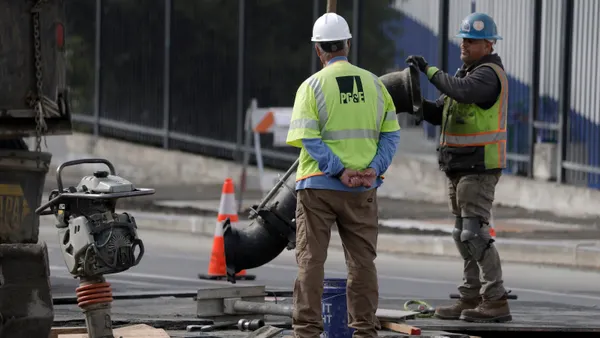In construction, an industry with notoriously low profit margins, profitability hinges on the ability to understand and control costs to keep your books in the black. With construction labor costs making up an estimated 20-35% of total project expenses, according to consulting firm Gordian, these costs are a crucial element in your company's profitability. Failing to accurately track and control these costs can lead to profit fade and leave you wondering where the margin went at the end of the project.
On the other hand, understanding your true labor costs enables you to create competitive bids and more precise estimates on future projects. Additionally, an accurate, real-time view of labor costs against your project budget allows you to spot potential overruns early, preventing profit fade and helping to ensure your company remains successful.
What are construction labor costs?
It’s easy to think of labor costs solely as the hourly rate of the folks wearing the toolbelt, but construction labor costs go beyond just the hourly wages paid to the people physically working onsite. To get a clear picture, it’s important to understand the difference between direct and indirect labor costs.
- Direct labor costs are the expenses directly tied to the workers who are actively involved in the physical construction process, including wages, salaries, bonuses, benefits, training and certifications for all employees doing hands-on construction work onsite, such as carpenters, electricians, masons and plumbers.
- Indirect labor costs, also known as support labor costs, are the expenses associated with workers that support construction activities but may not be directly involved in the physical work, such as project managers, foremen, superintendents, administrative personnel, IT, accounting, HR, etc. Indirect labor costs also include expenses for safety officers and quality assurance personnel.
Controlling construction labor costs
While labor costs vary widely depending on a variety of factors, including labor shortages, seasonality, project location, government regulations, inflation and many more, the strategies for effectively managing labor costs are broadly applicable no matter where your business operates. Here are a few key ways you can control labor costs to keep your company profitable:
- Capture work hours accurately: Using field and mobile-capable software tools for time entry, including regular time, overtime and breaks, can help ensure all direct labor costs are tracked accurately to prevent you from over- or underpaying your workers and subcontractors. Going further, assigning them to specific projects and cost codes allows you to track time data against project progress to better measure worker efficiency.
- Fine-tune your labor strategy: You wouldn’t want a journeyman electrician who you’re paying $100/hour to unload materials from a truck all day, right? The same applies to your labor force. Take time to identify your crewmembers’ strengths and experience, and focus on skill-based task assignment to align the right expertise to match project demands.
- Analyze field work in real time: With up-to-date labor and progress data from the field, you can generate accurate and timely job cost reports to understand labor spending and compare actual costs to initial estimates. This helps you identify potential labor cost overruns and eliminate any unwanted budget surprises at the end of the job.
- Build long-term career pathways: It’s almost always easier and more cost-effective to keep existing employees than to find and hire new ones. Between lost productivity, recruiting and onboarding, hiring can cost thousands of dollars per skilled worker. By providing upskilling opportunities, training and pathways for long-term career progression, you can develop the expertise you need for the future while avoiding unnecessary costs incurred with hiring experienced labor.
Connect labor, job costing and ERP to stay profitable
If you want to truly gain control over your labor costs, having an easy way to collect time entry in the field on a mobile device and real-time visibility with a connected solution can allow you to make better decisions around labor costs.
Connected labor and job costing solutions pull data from field work and compare estimates against actual WIP reports, track detailed labor costs in real time, generate comprehensive automated reports and see accurate breakdowns of project labor expenses whenever you need them.
In addition, by connecting job costing to your enterprise resource planning (ERP), you can see how any changes to labor costs will impact your project budget, allowing you to make informed decisions and monitor the financial health of your projects in real time to keep your profitability healthy on every project.
While many elements impact construction labor costs, accurately capturing work hours, delegating tasks based on skill, analyzing project progress and investing in employee career progression can help keep these costs down while building a stronger and more loyal workforce.
To learn how a purpose-built connected construction suite can help you control labor costs and maintain profitability, visit Trimble.com.










